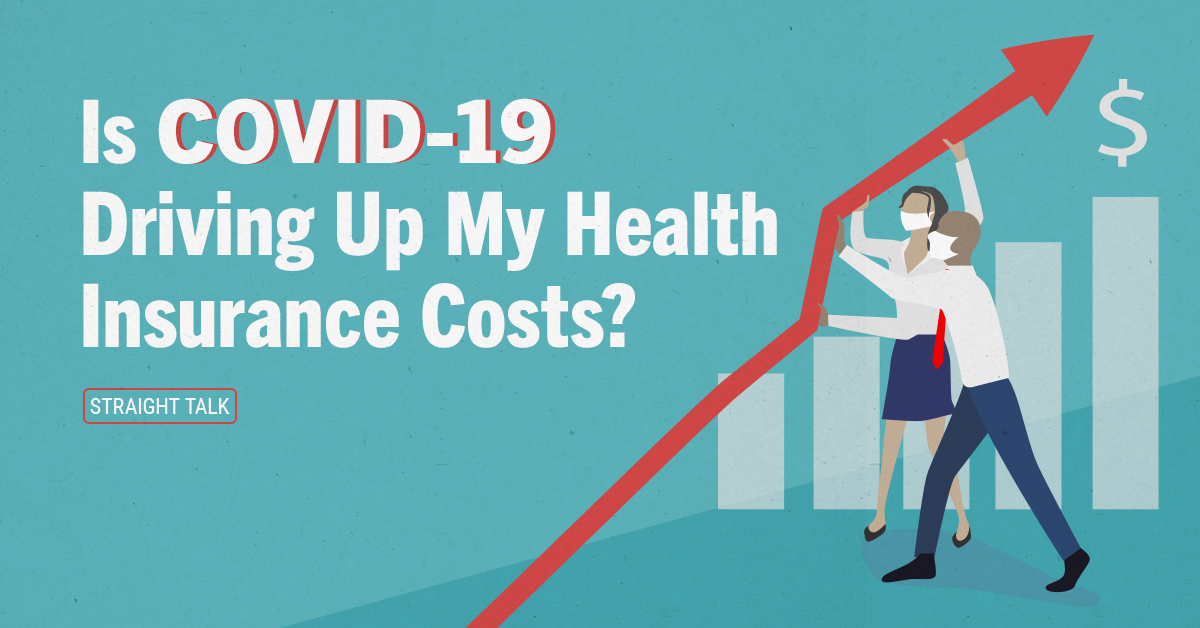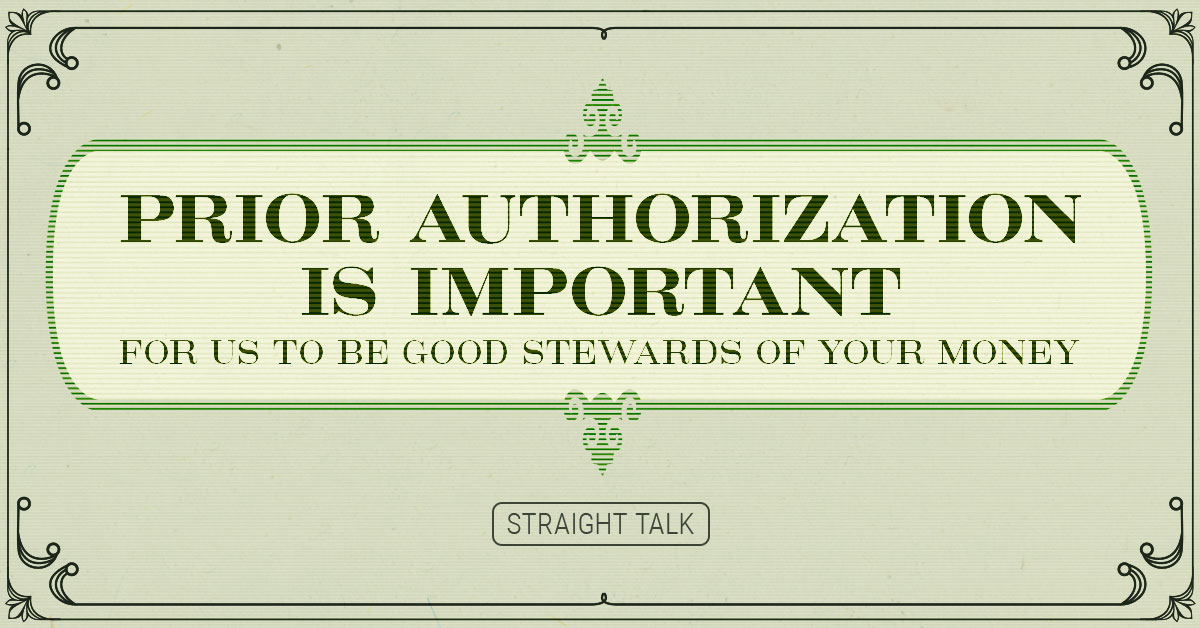Part of my job as a health care economist for Blue Cross and Blue Shield of Louisiana is to talk to people, explaining health care costs and what Blue Cross does to safeguard your health care premium. A very common question I get hit with is whether the money we’ve spent over the past 18 months or so treating COVID-19 patients has translated into higher health insurance rates for our customers.
The reality, as with most things, is complex.
During 2020, we dealt with COVID-19 pretty much from March through December. At one point, the hospitals were so focused on dealing with their thousands of COVID-19 patients that they literally shut off other types of non-critical procedures and care. Lots of our customers stopped going to the doctor, urgent care clinics or emergency rooms because they didn’t want to catch COVID-19. Other than COVID-19 care, medical spending really slowed down compared to a normal year because people weren’t keeping up with their routine appointments, screenings and procedures.
This led our overall health care costs to be lower than expected in 2020. In fact, we gave out rebates twice, in September and December, to our members to make sure we stayed within federal pricing guidelines about how much of your premium dollars must be spent directly on health care services. Because we spent less on health care than in a typical year, we gave that money back to our members.
2021 has been a very different story for two reasons.
First, vaccines became available starting in December 2020, giving our members the opportunity to make it MUCH more difficult for them to catch, be hospitalized because of, or die from COVID-19.
Second, the COVID-19 Delta variant swept through our state during the summer. The Delta version of COVID-19 turned out to be MUCH more contagious than earlier strains of COVID-19. Many younger, otherwise-healthy people got very sick, were hospitalized or died from COVID-19 than at any other point in the pandemic. In 2020, the average age of people hospitalized from COVID-19 was around 70 years old. In 2021, when the most recent Delta surge of COVID-19 happened, the average age of hospital patients was 50. And, a LOT more Blue Cross customers ended up in the hospital in 2021 than in 2020.
Tens of thousands of Louisianians have been hospitalized for COVID-19 so far in 2021, and Blue Cross customers paid for a lot of them. In addition, lots of the people who didn’t get their routine care during 2020 showed up to get their procedures, screenings, lab work and tests done in 2021. We call that “pent-up demand for care.” Because of these factors, our claims costs are running significantly higher this year than we expected them to be. That could mean higher rates than expected for 2022, depending on which health plans you or your employer selects.
So, you might ask, “Well, Mike, what can I do about THAT?”
I would respond, “Get yourself and your family vaccinated.”
I want to be clear – I’m not making a political argument. I’m not really even making a scientific argument.
I’m making an economic argument for vaccination.
How does that work? It’s really simple. We know, for example, that MOST of the adults who end up in the hospital from COVID-19 are unvaccinated. In fact, of those people who ended up hospitalized with COVID-19, 86% were unvaccinated. We also know that the vast majority of our country’s population who pass away from COVID-19 are also unvaccinated. Unvaccinated individuals are 11 times more likely to die from COVID-19.
So, let’s take a look at the relative costs of COVID-19 treatments, and you can get a feel for why I’m pushing vaccination from an ECONOMIC perspective.
Remember that 85% of your health insurance premiums are typically determined by the cost of care paid by your insurance carrier during the year. This is called the Medical Loss Ratio and it’s a federal rule that limits our operating expenses to 15% of premiums, on most plans.
Each COVID-19 vaccine dose will cost your insurance company about $40. That’s about $80 for two doses of Pfizer, Moderna or Johnson & Johnson (since the Feds now recommend a booster for everyone who gets one shot of J&J). The federal government pays for the actual shots; your insurance company pays the people who inject you to do so. So, vaccination has less than a $100 effect on health care costs per person.
And how much of that will you pay out-of-pocket? Nothing, nada, zip, zilch.
But, let’s say you are among those who are refusing to get the vaccine, and you catch COVID-19. You’re feeling pretty bad, so you go see your doctor. They will give you some pills, either Monuvirapir (or eventually, Paxlovid). A five-day course of either will cost your insurer between $700-$900. That’s 8-9 times as much as it costs them for the shots.
If those pills don’t help your case, the next step is a monoclonal antibody infusion. That will push another $2,500 of cost into your health insurance. If the infusion doesn’t do the trick and you end up in the hospital, the first step is to give you a treatment with Remdesivir through your IV. That’s another $3,200 or so.
Assuming you manage to stay out of the Intensive Care Unit (ICU) and off of mechanical ventilation, your insurance company will end up paying around $38,000 for your total hospital bill. If not, and you (sadly) end up in the ICU, or on a vent, the price can run from $80,000 to $1 million or more.
And how much of THAT will you pay out-of-pocket? It will depend on your plan, but most members have some sort of cost-share (co-pay, deductible and/or coinsurance charges). You will likely pay some portion of your COVID-19 treatment costs – beyond what you’re already paying for your health insurance premium.
In 2021, tens of thousands of Louisianians were hospitalized due to COVID-19. You can be sure there were Blue Cross members in that group. But it’s completely fair to say that the cost of COVID-19 care for the unvaccinated will be a significant factor in your 2022 insurance premium, and that will mean increases. It’s just math.
On the other hand, we have real-world evidence from the MILLIONS of people who have rolled up their sleeves over the past year that the vaccines are safe and effective at preventing severe illness, hospitalization and death from COVID-19. And, with the recent recommendation that children ages 5-11 get the COVID-19 vaccine, this option is available to keep even more of us safe. And remember, it costs you NOTHING out of pocket to get the jab.
The Straight Talk is, if you are wondering what you can do to help keep your health insurance prices down in the current environment, you’ve got an easy and obvious option: get vaccinated against COVID-19 and encourage your friends and family to do the same.
It’s all money, after all.





Leave a Reply